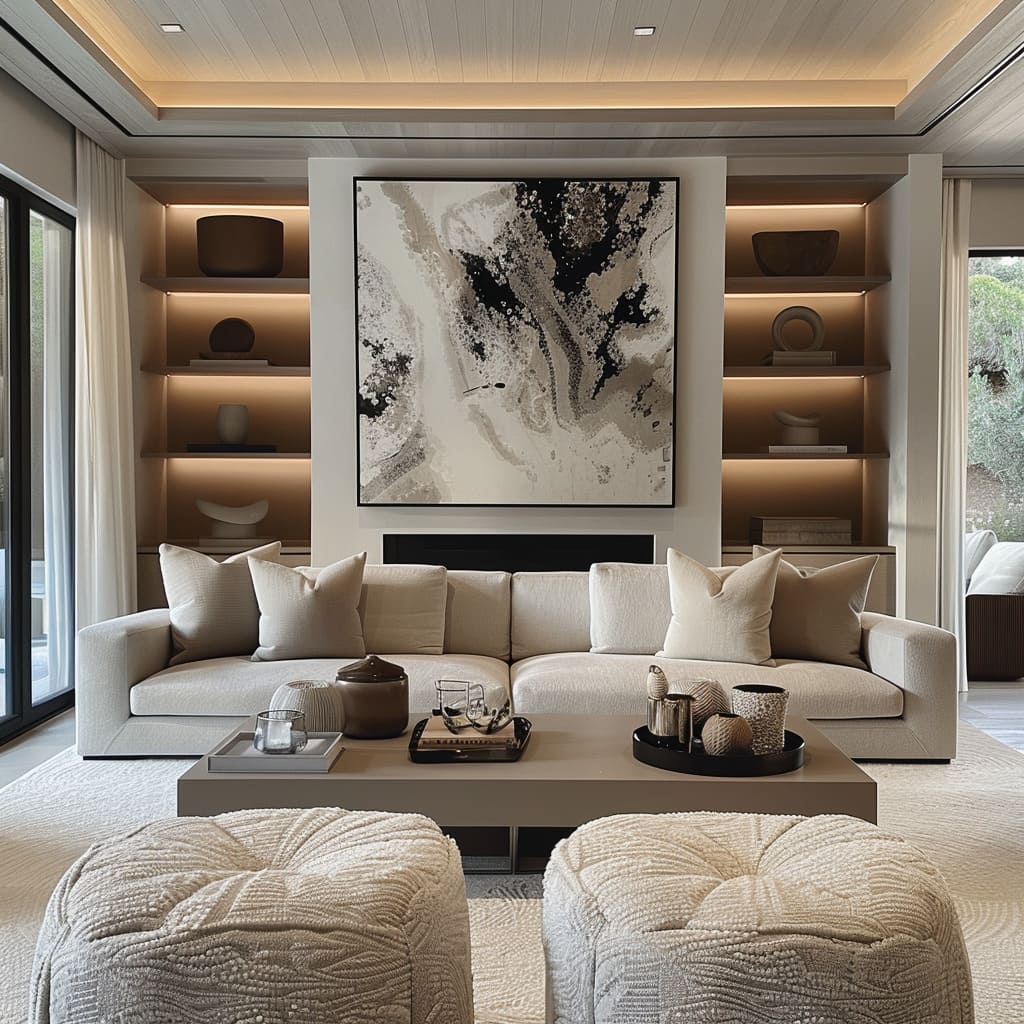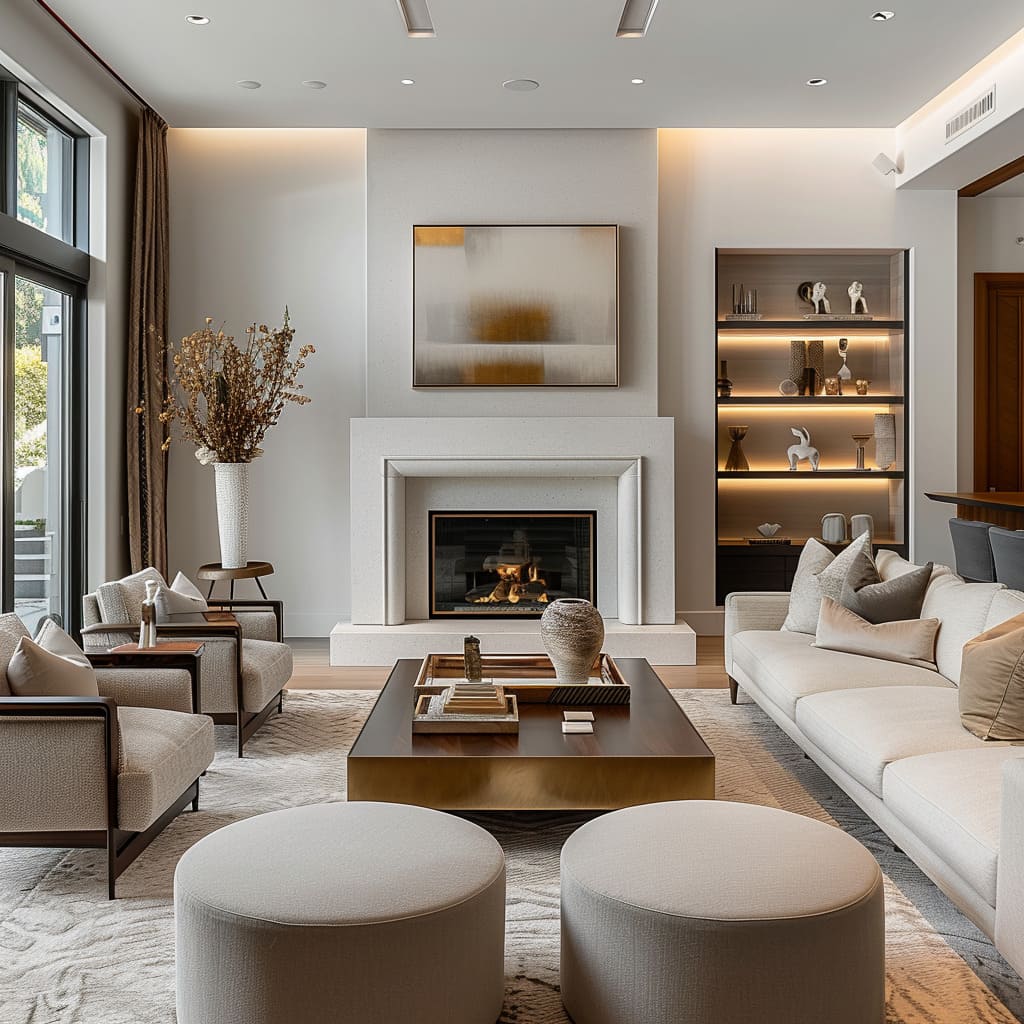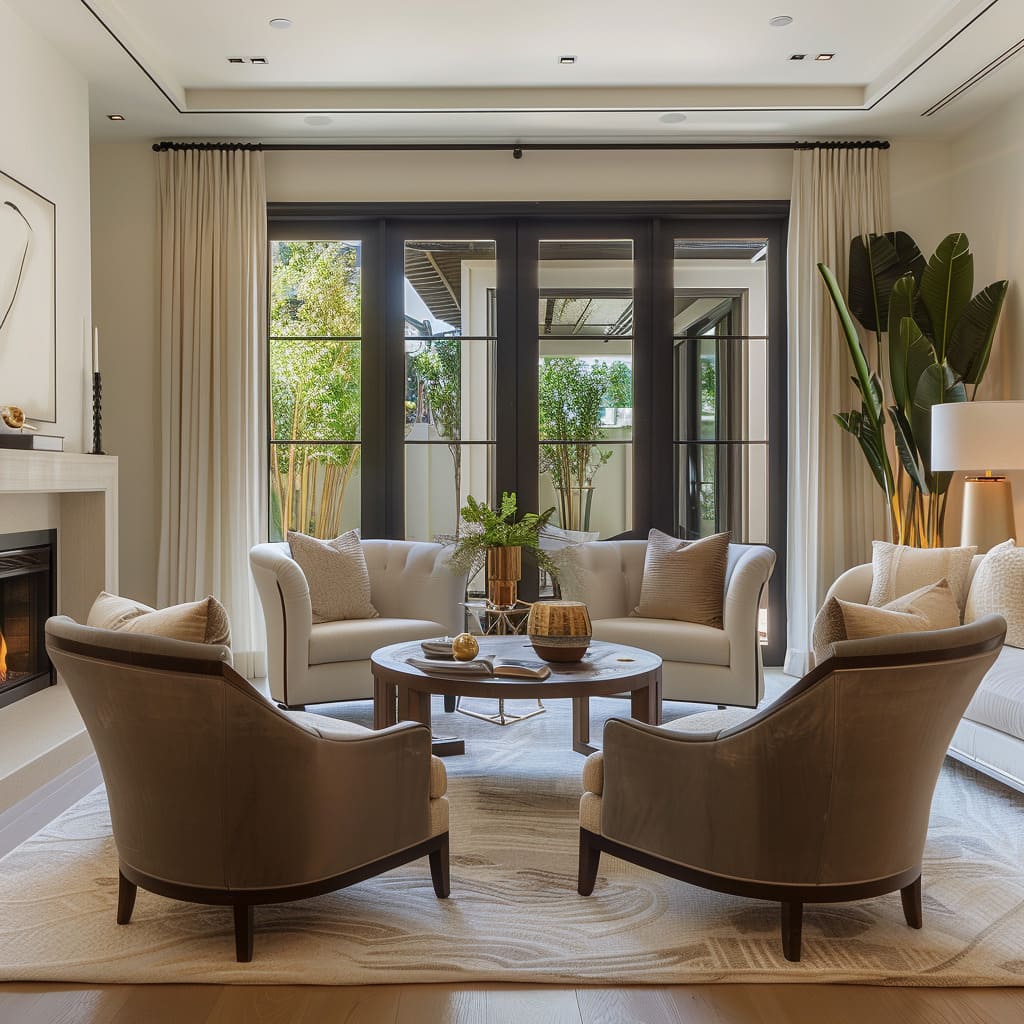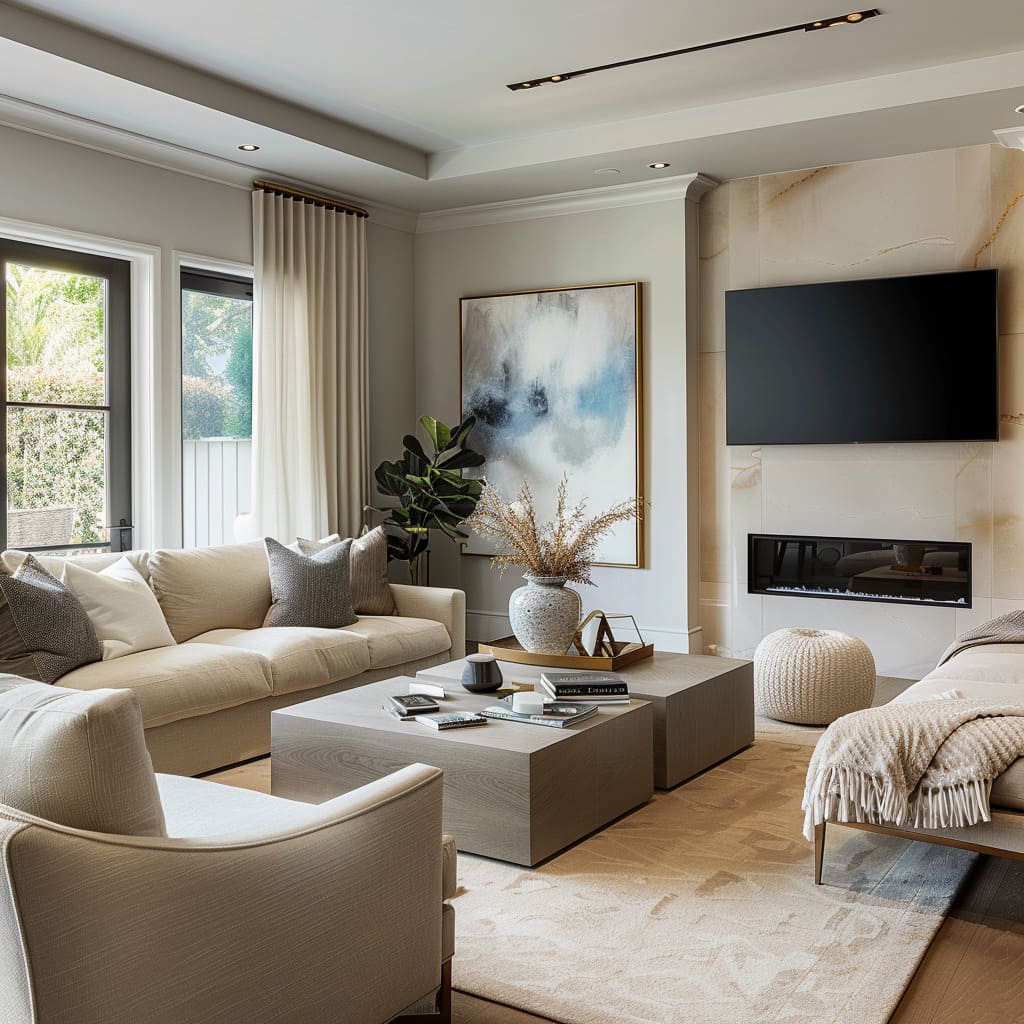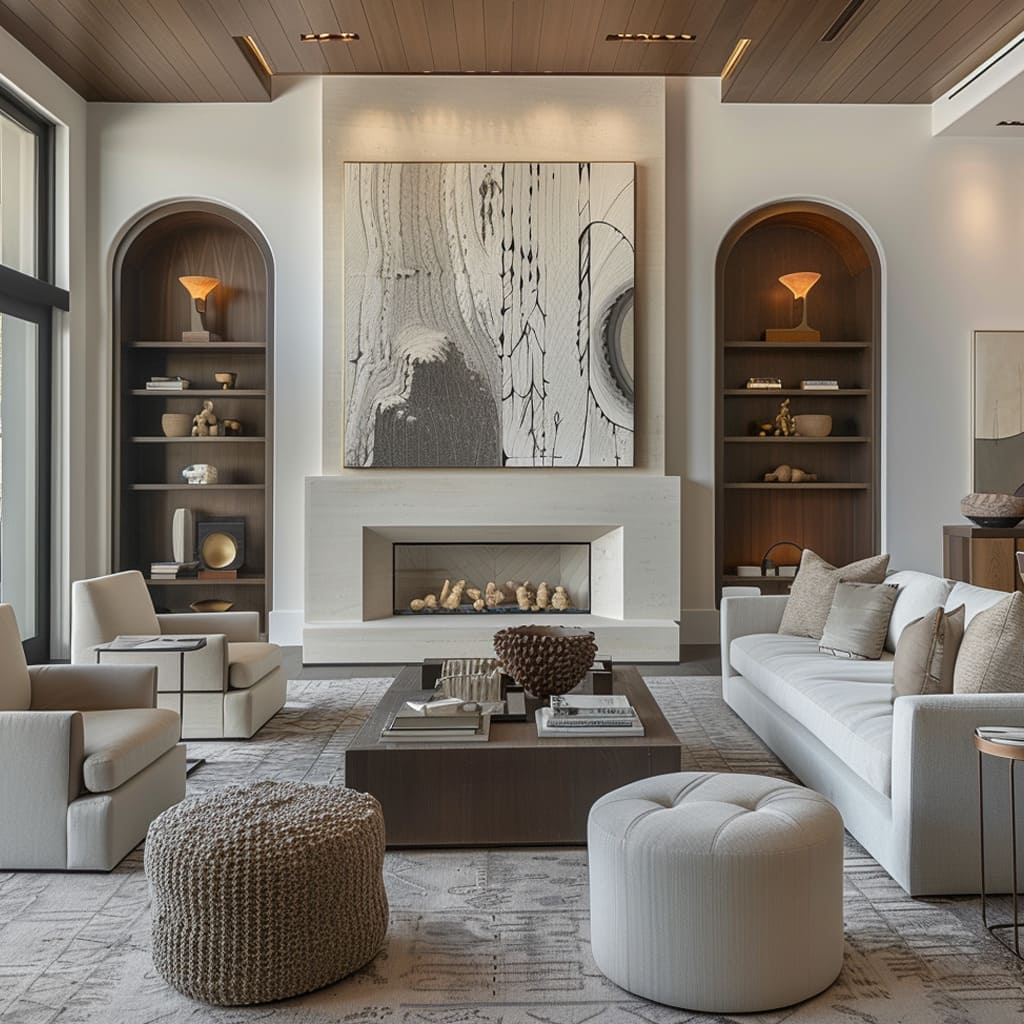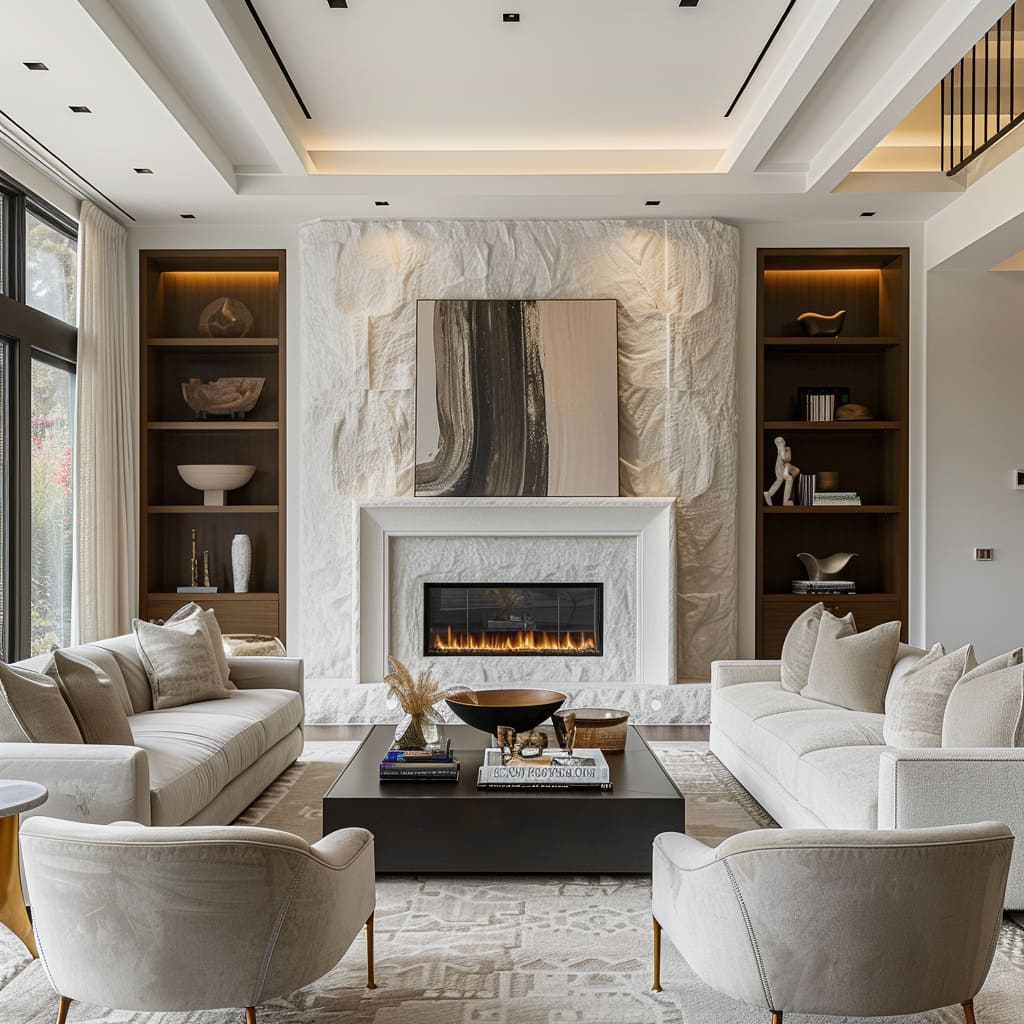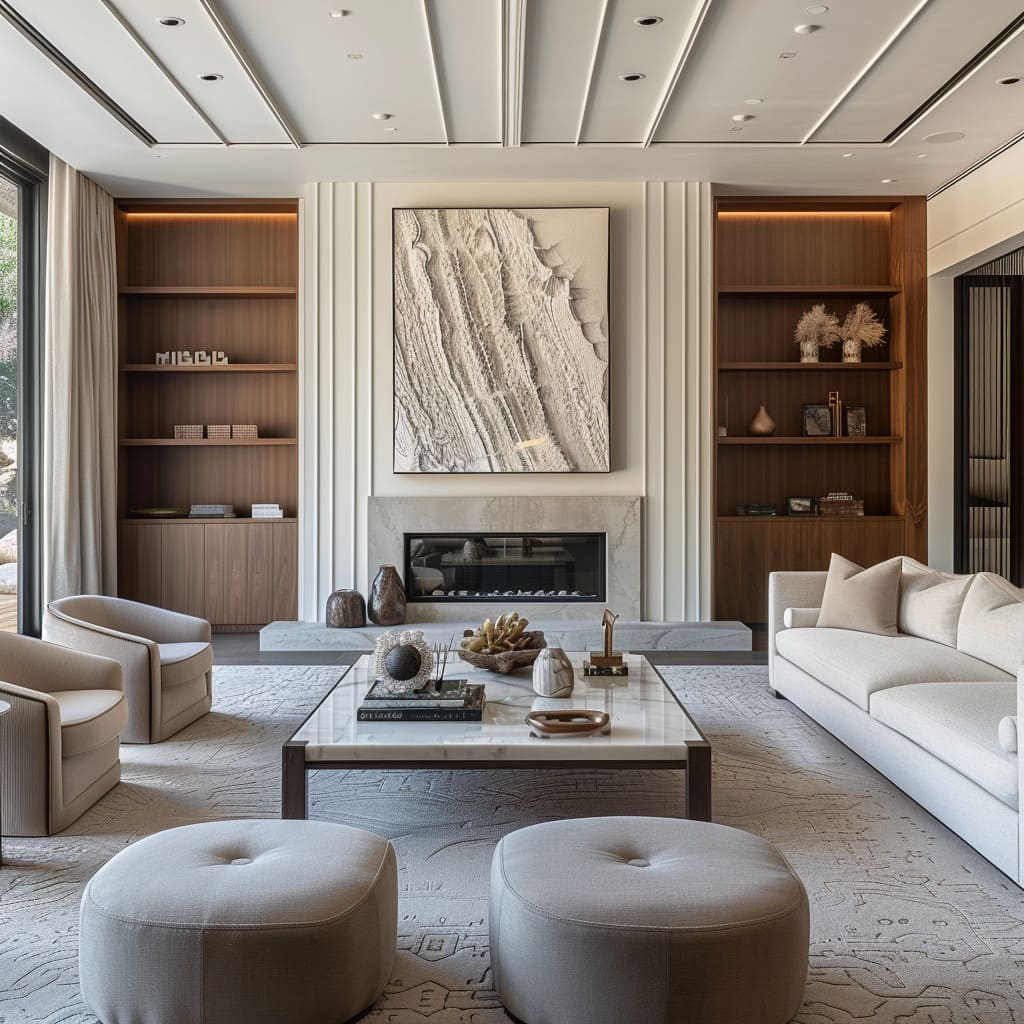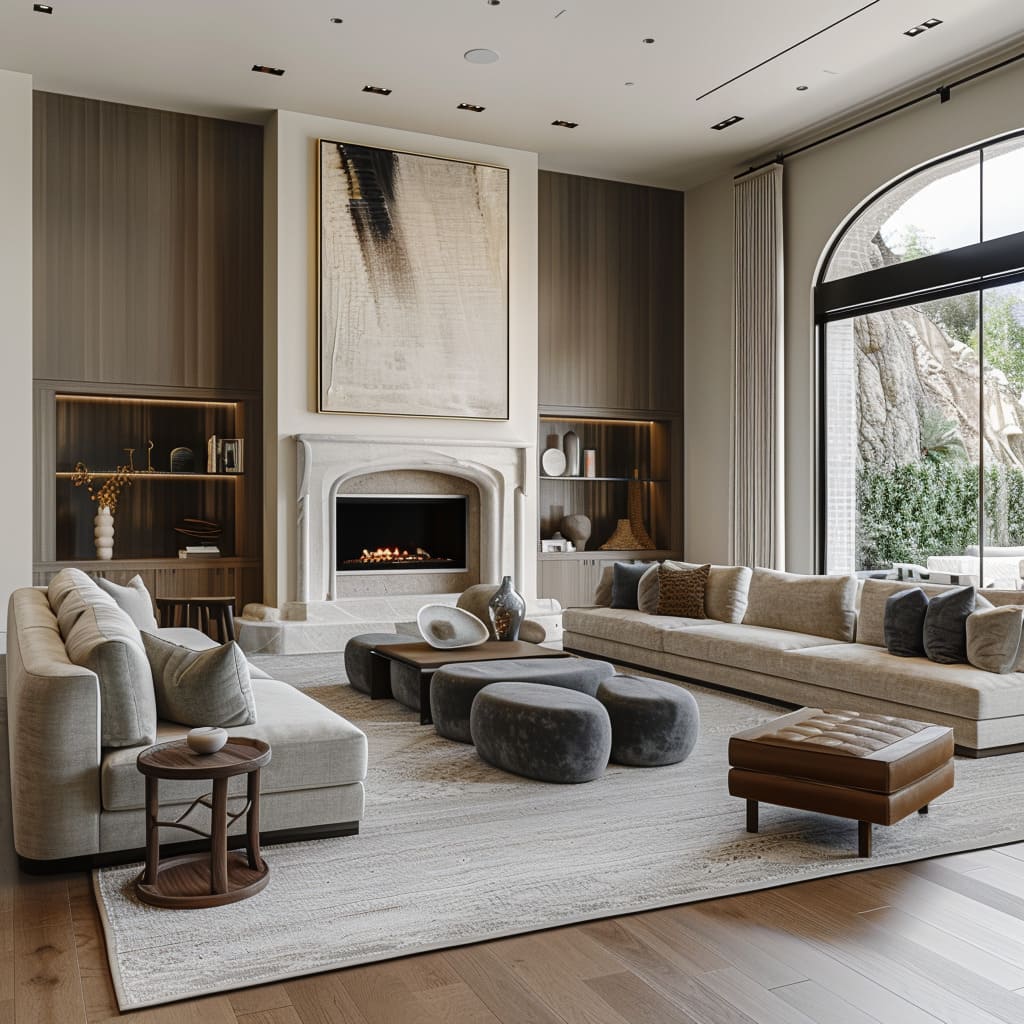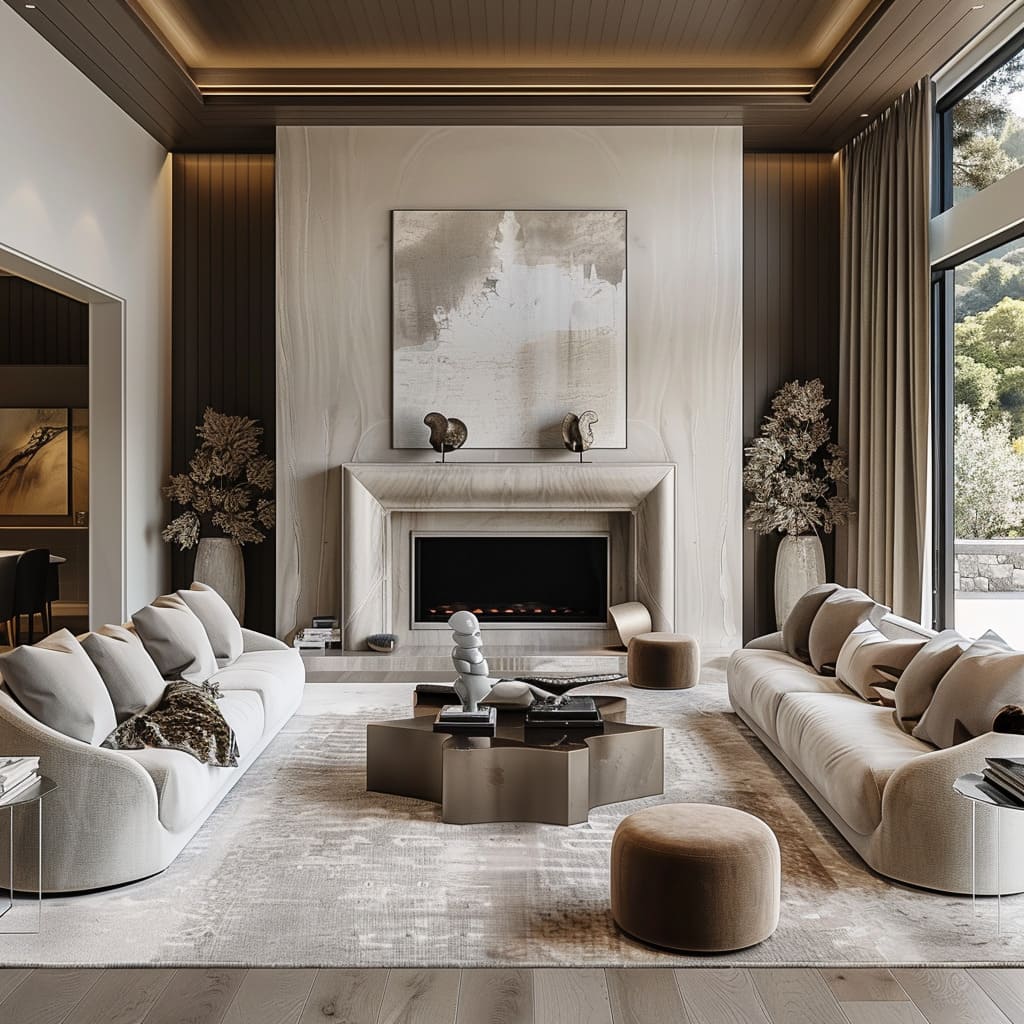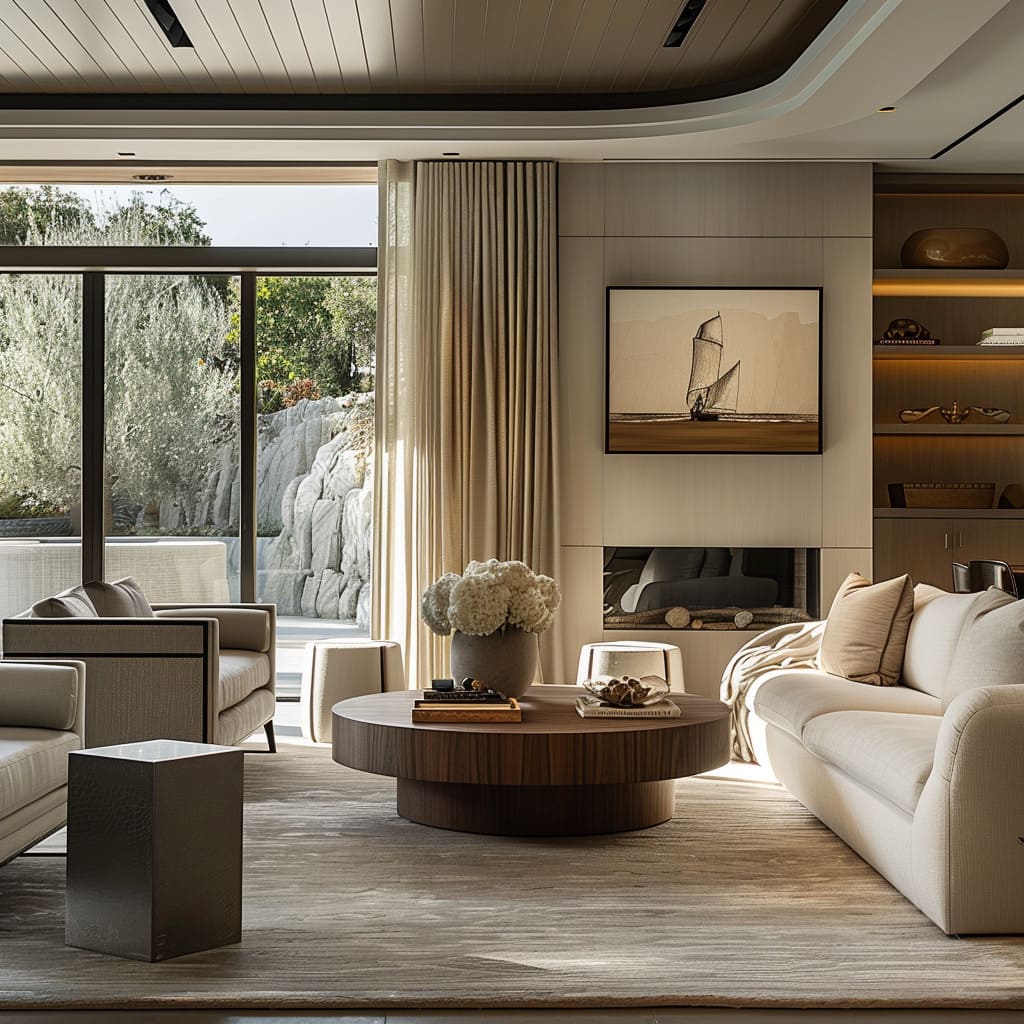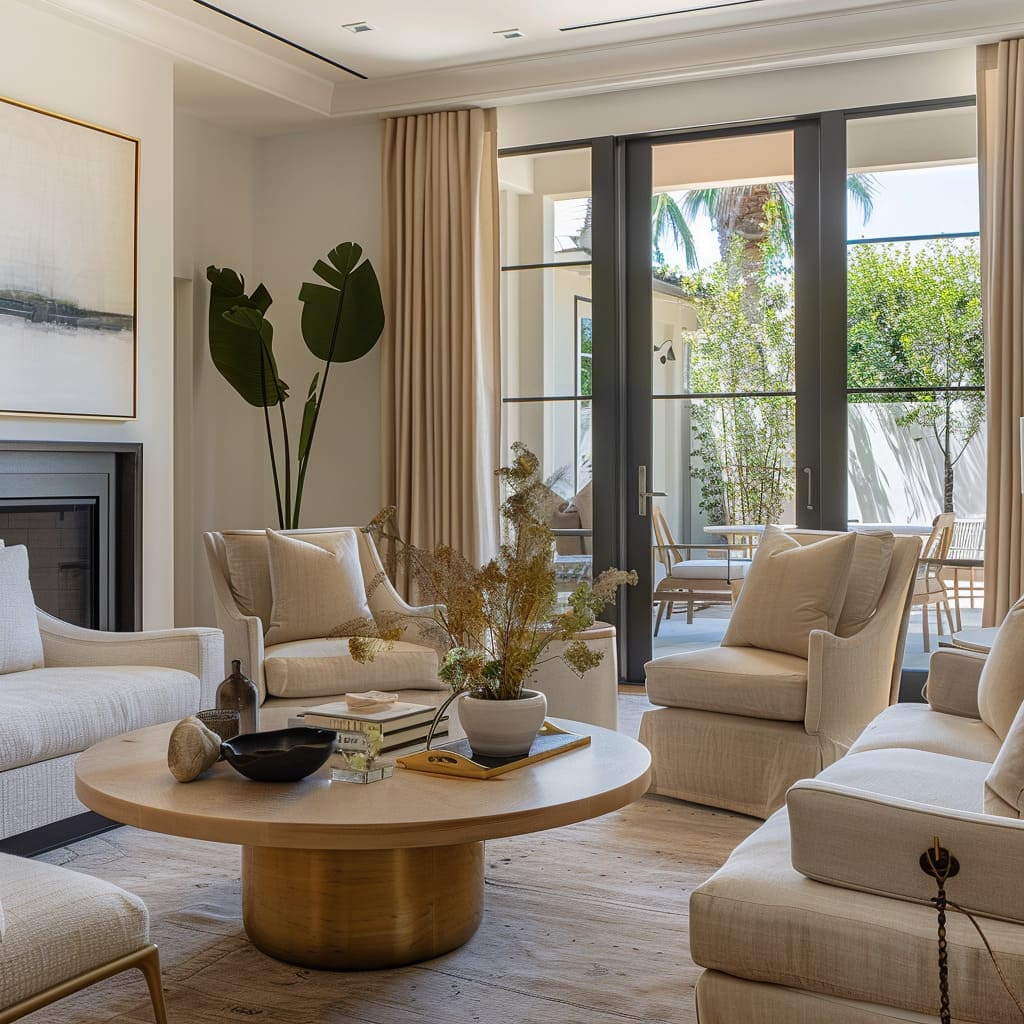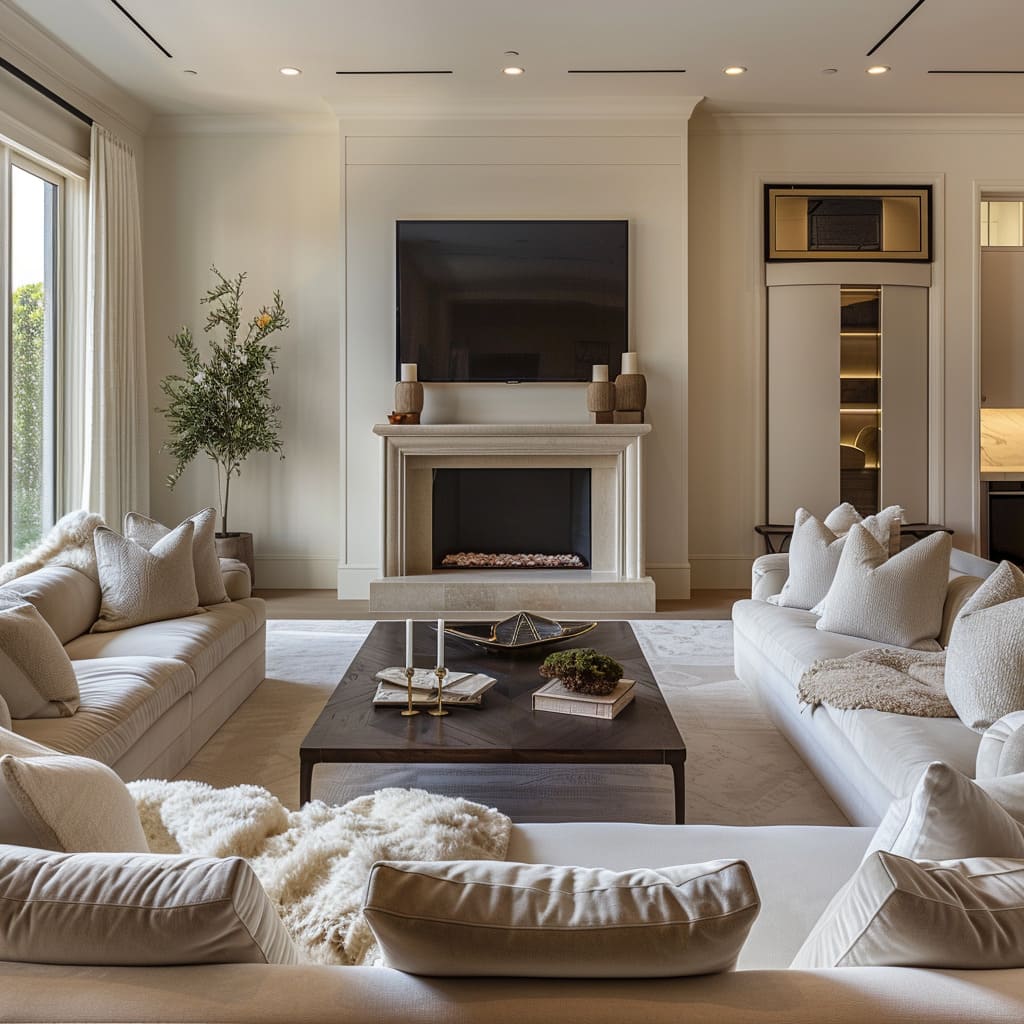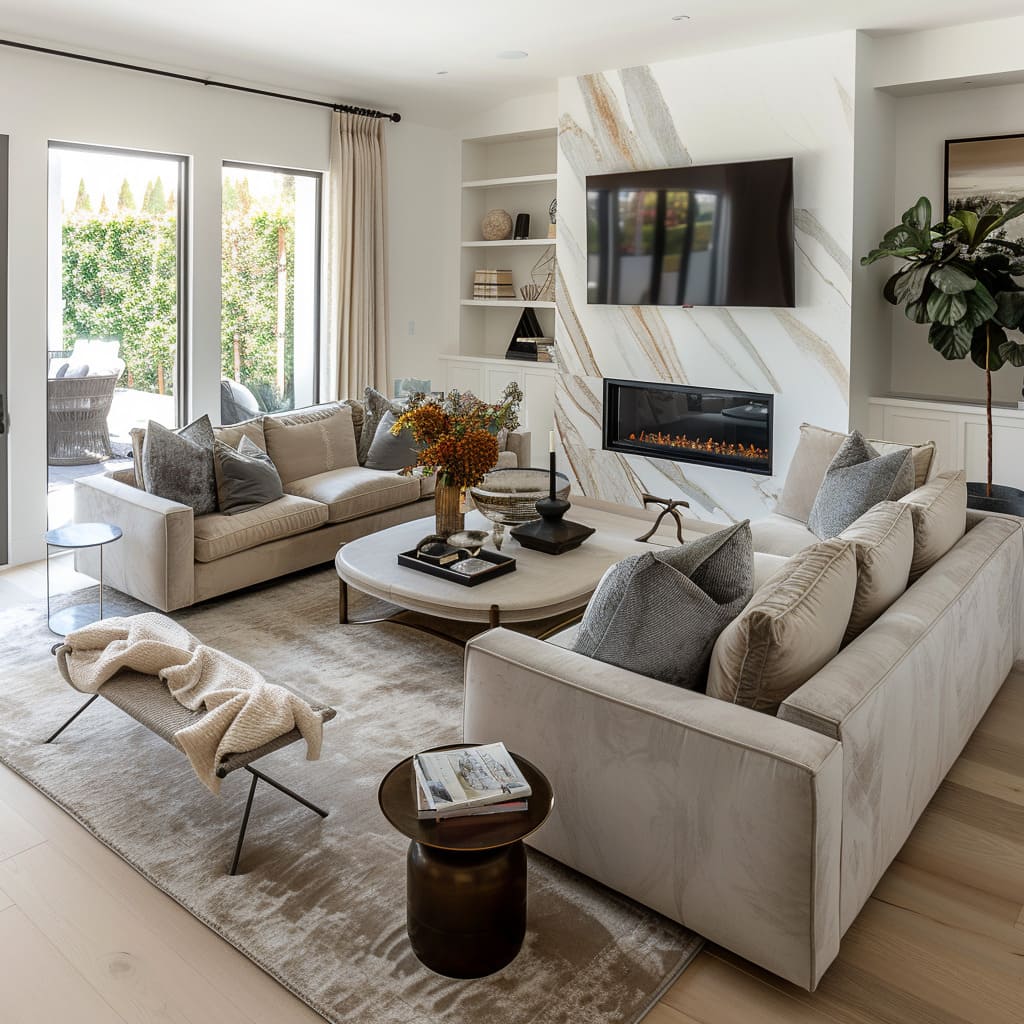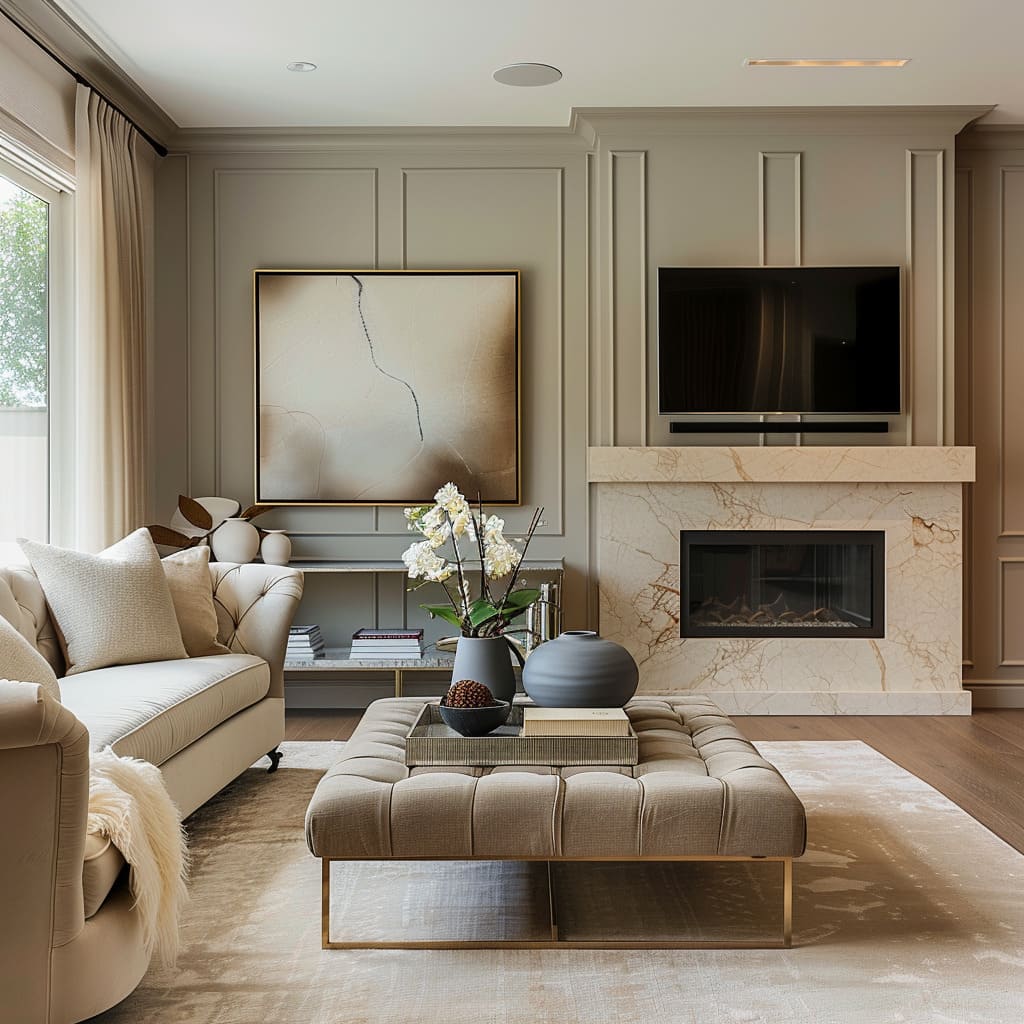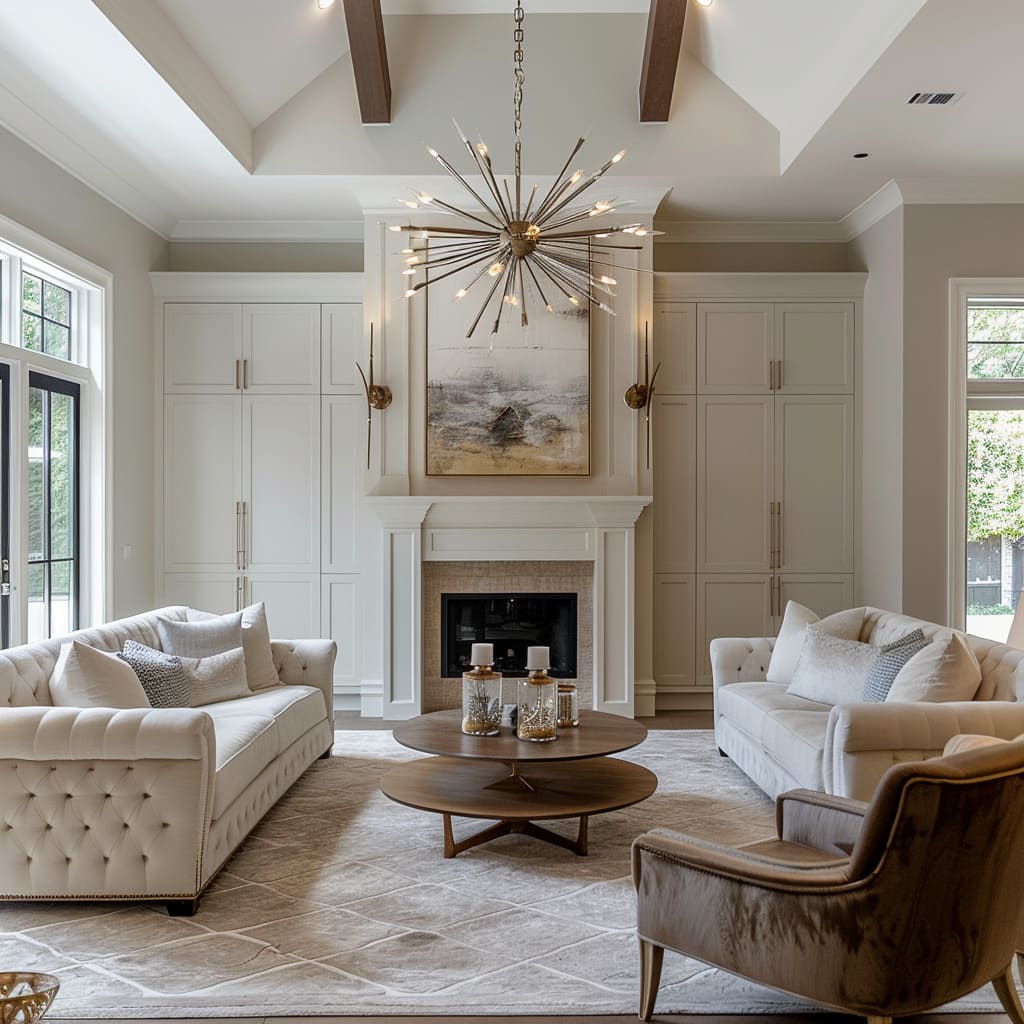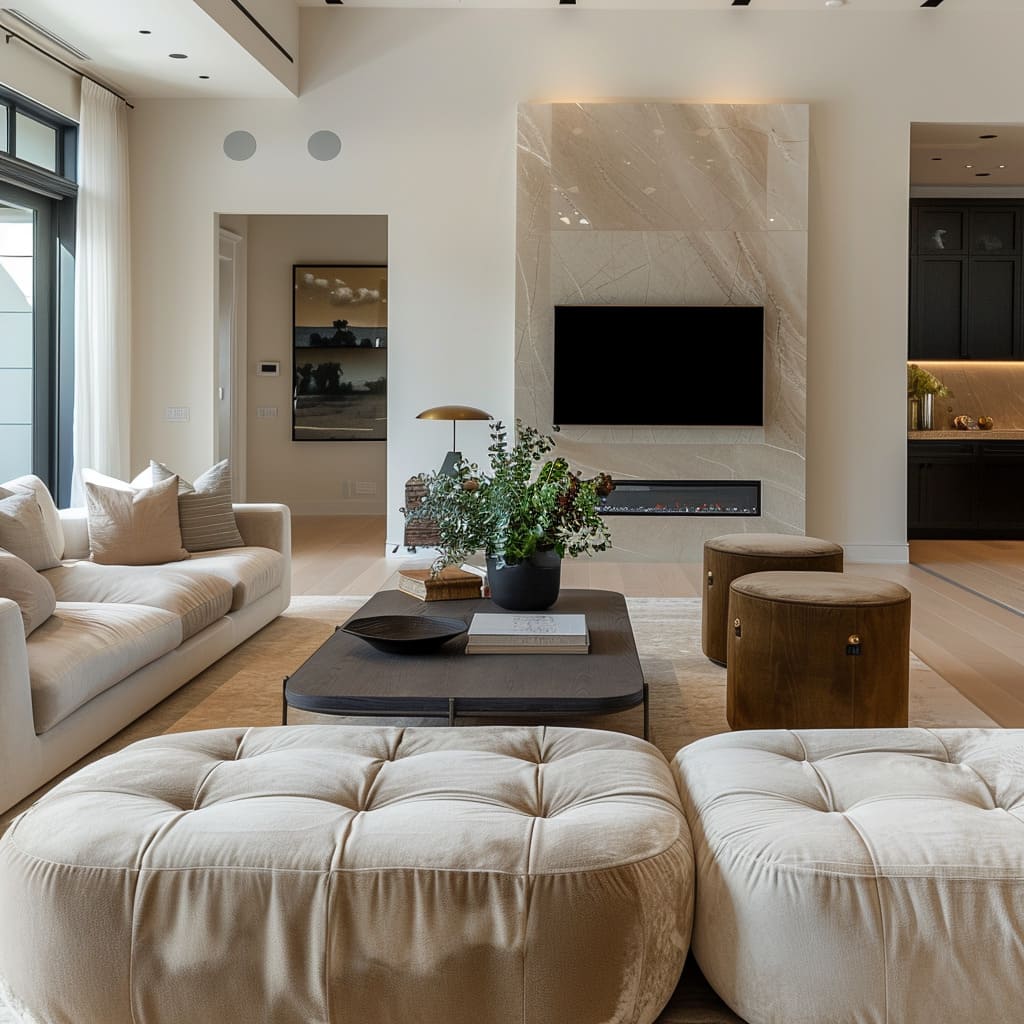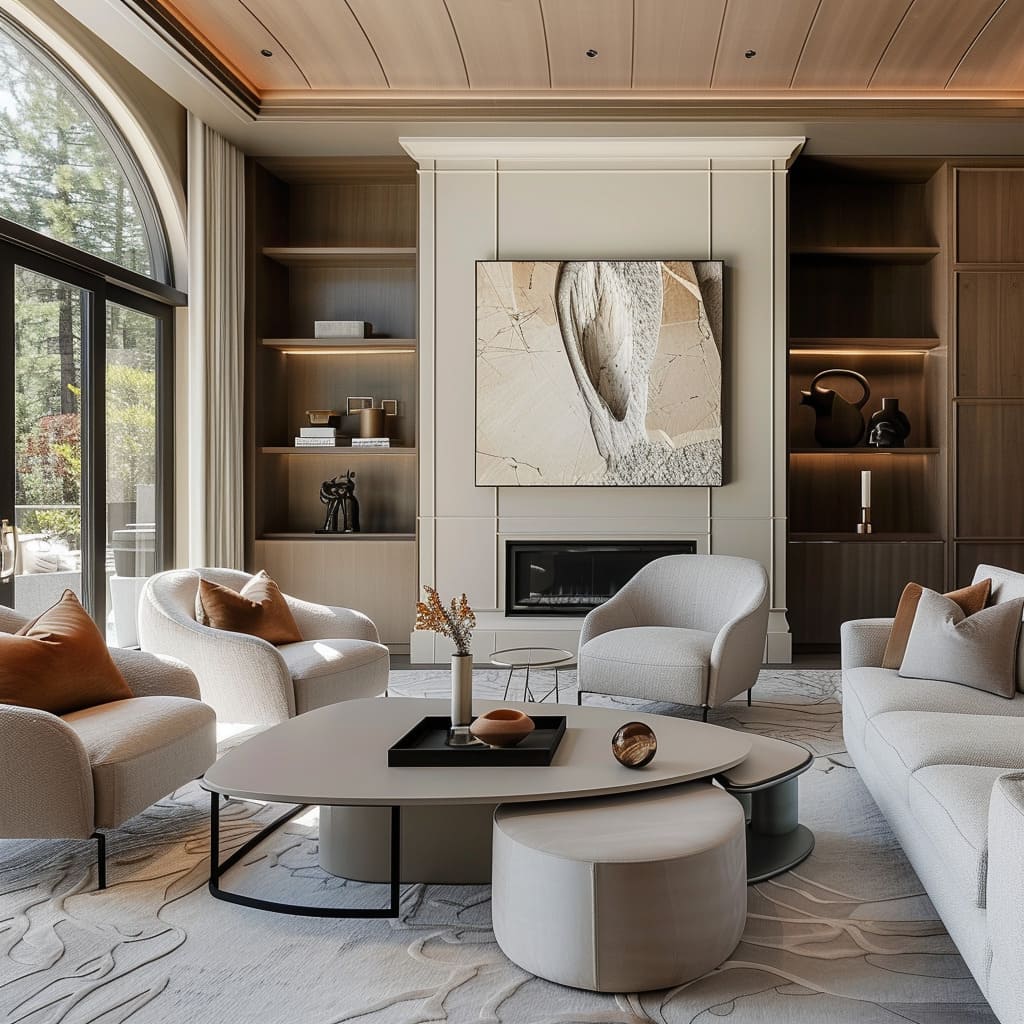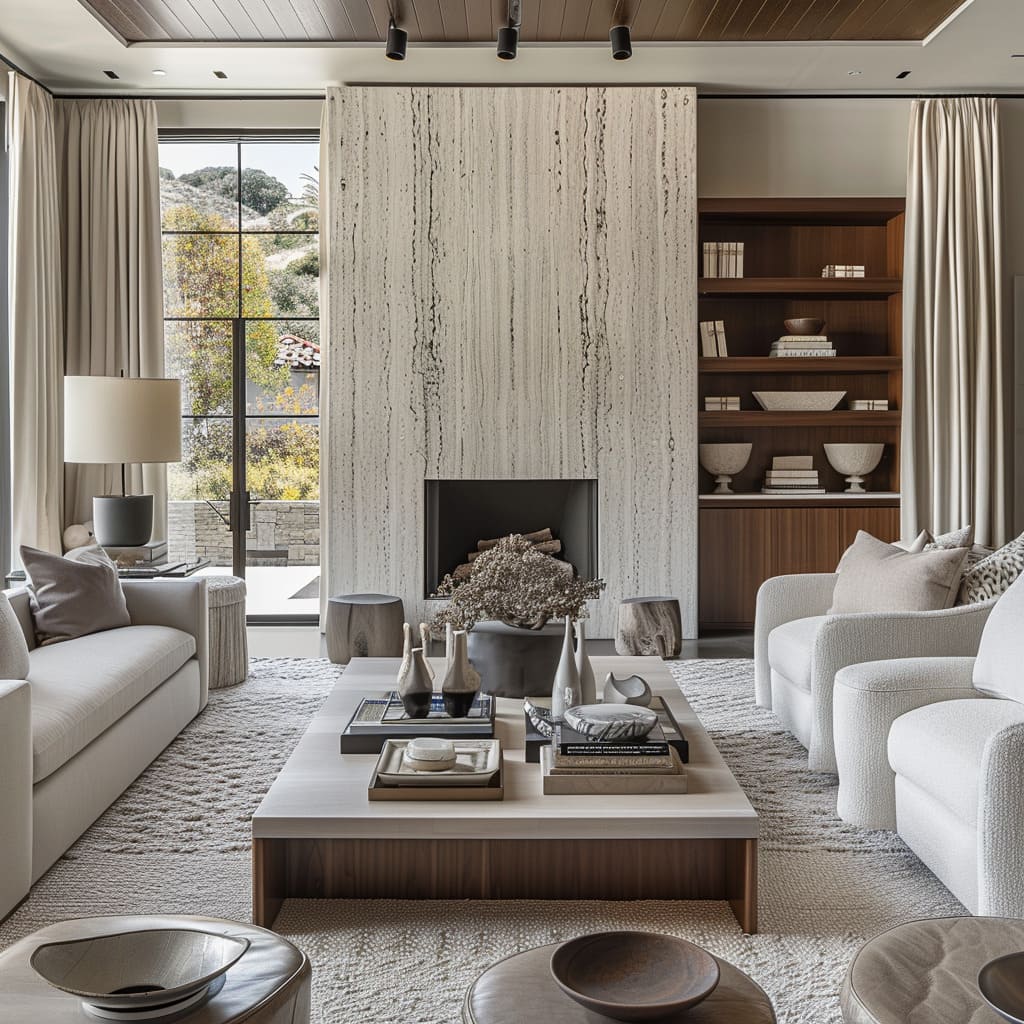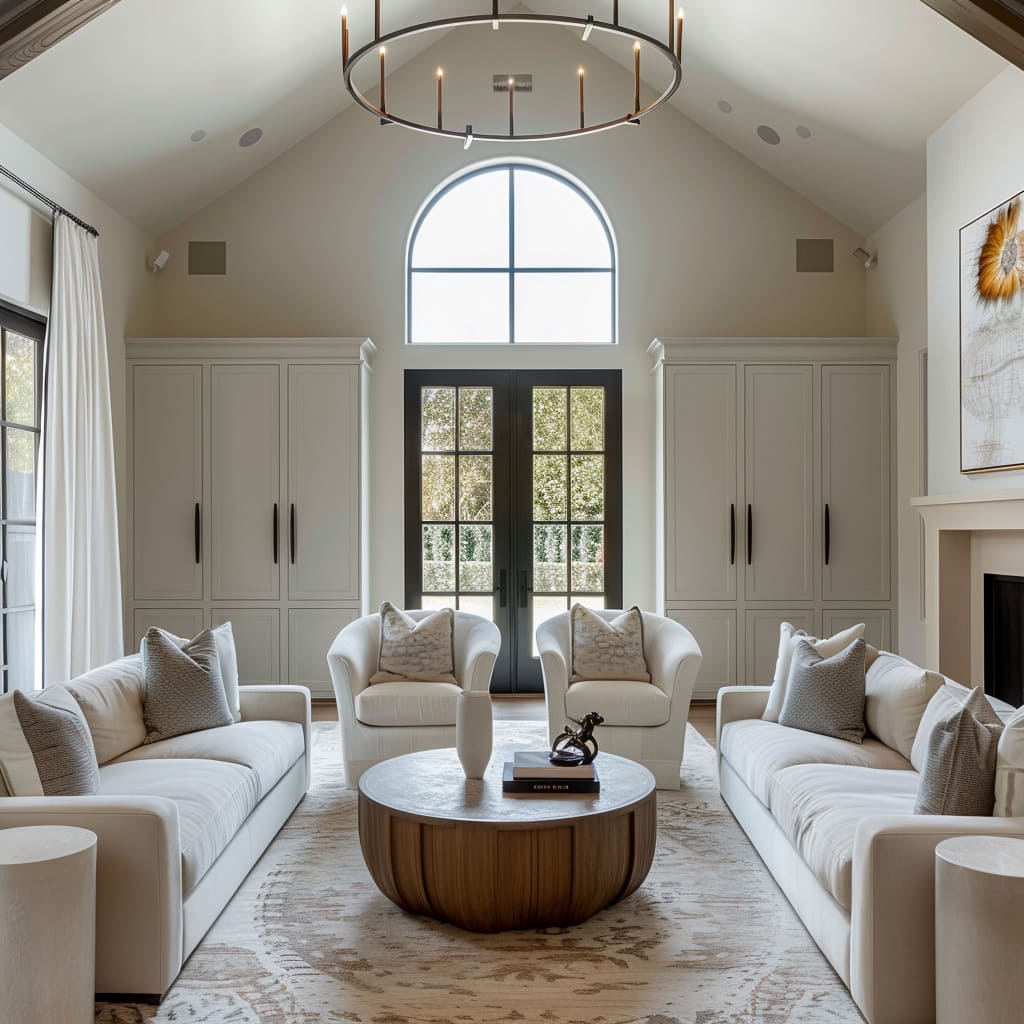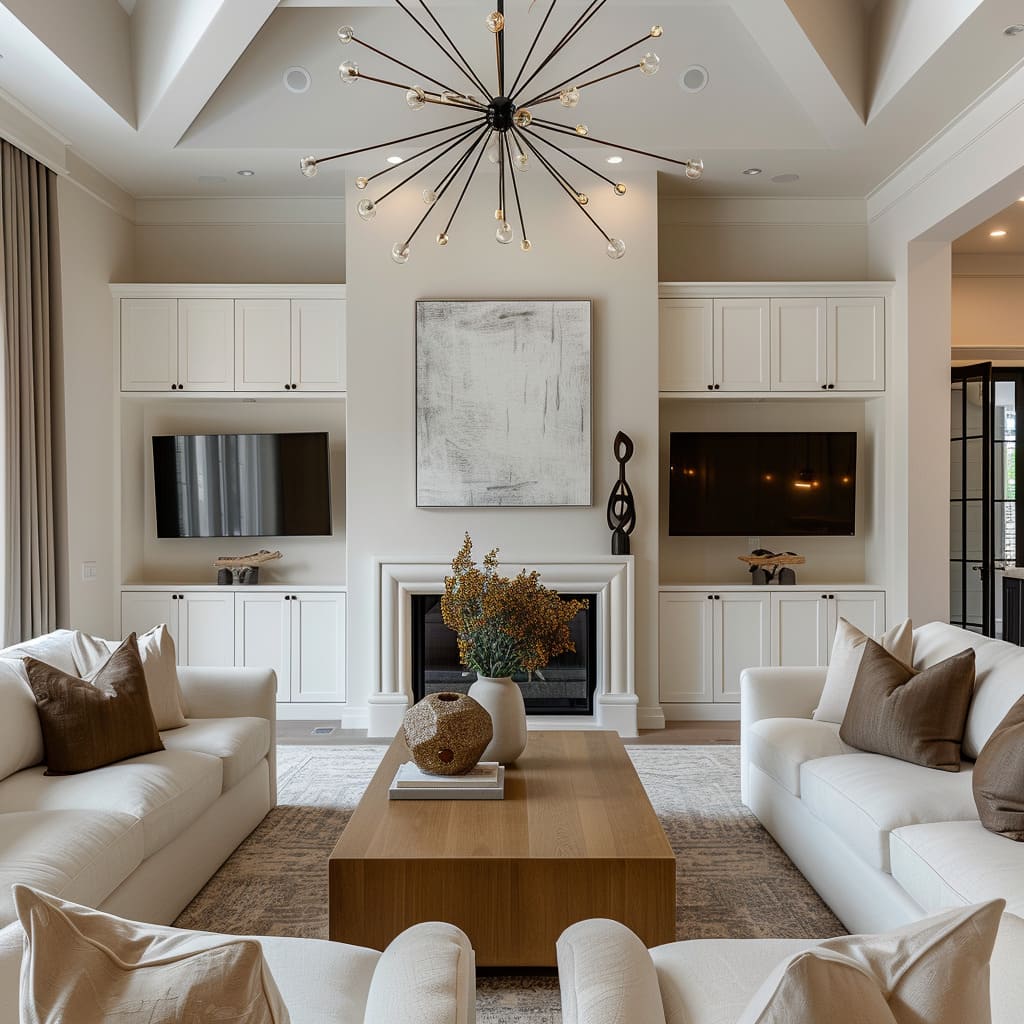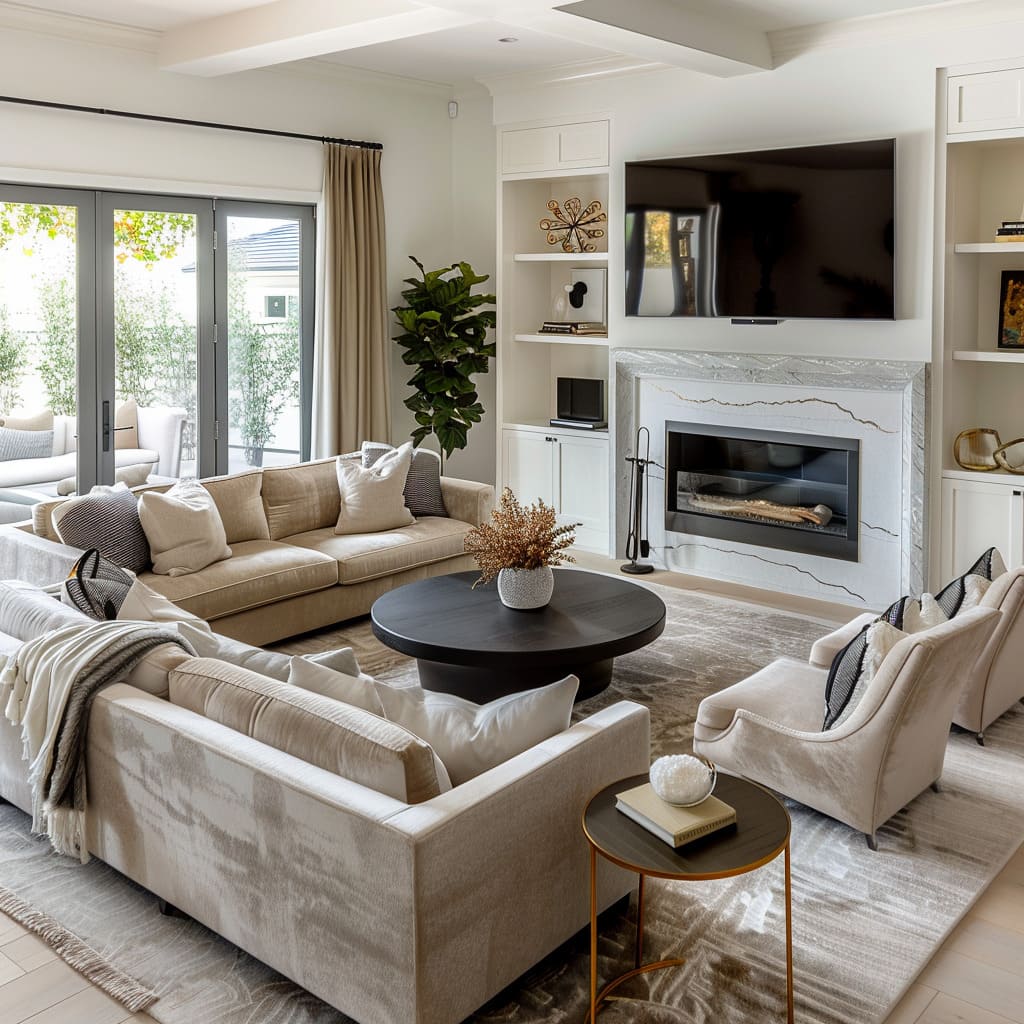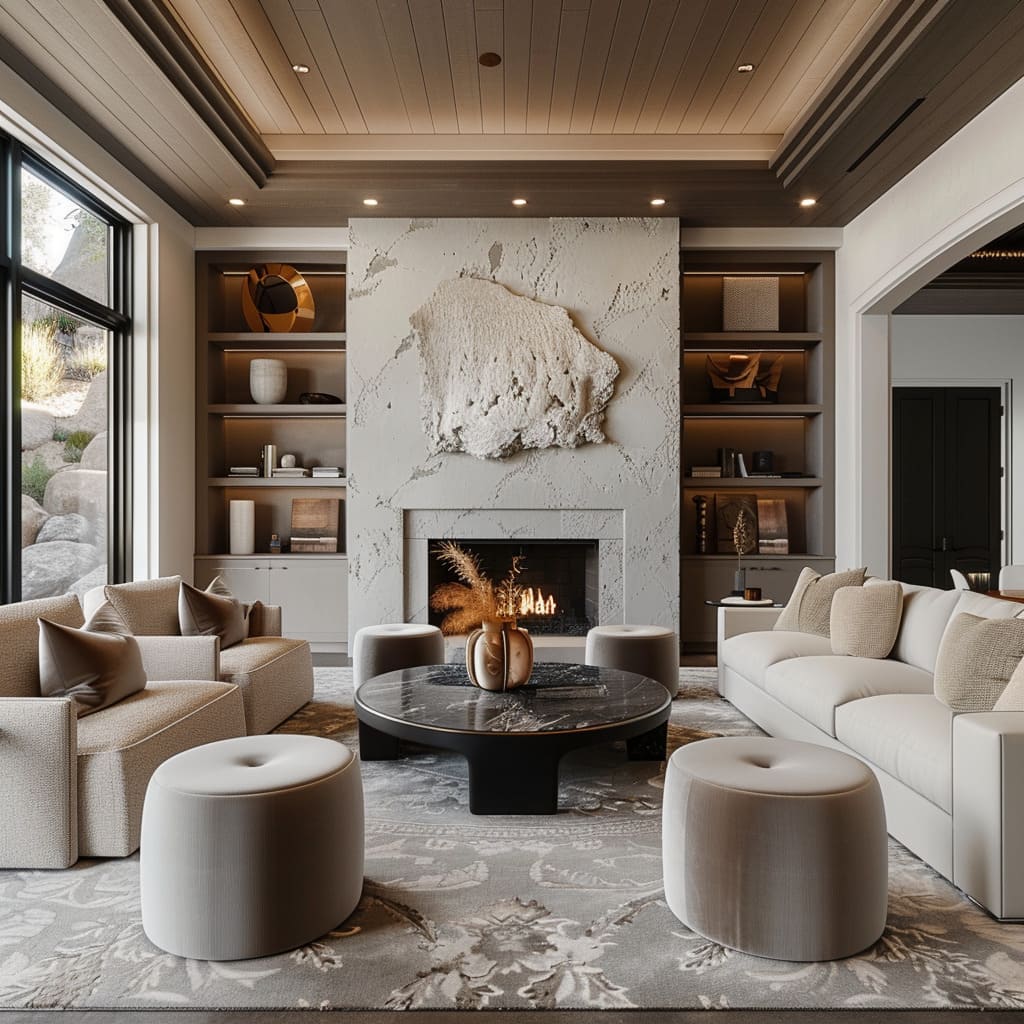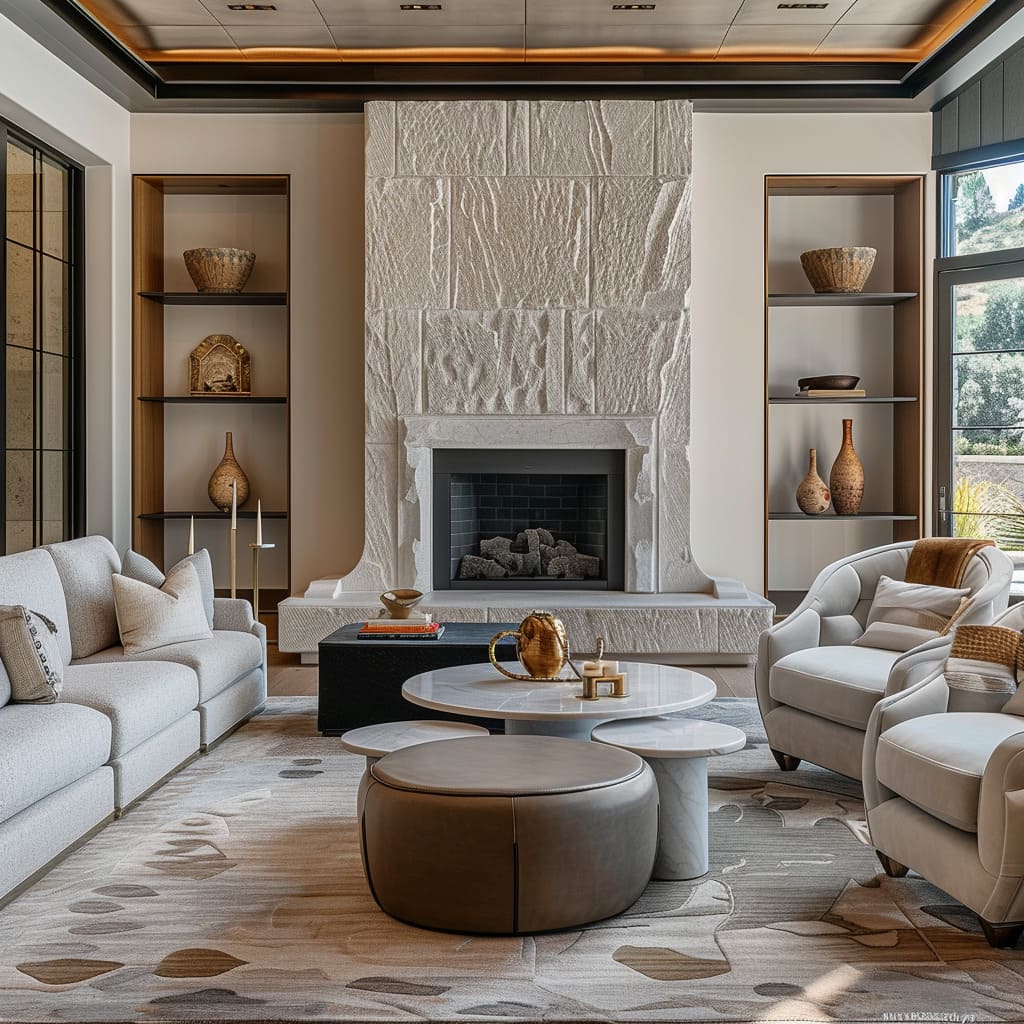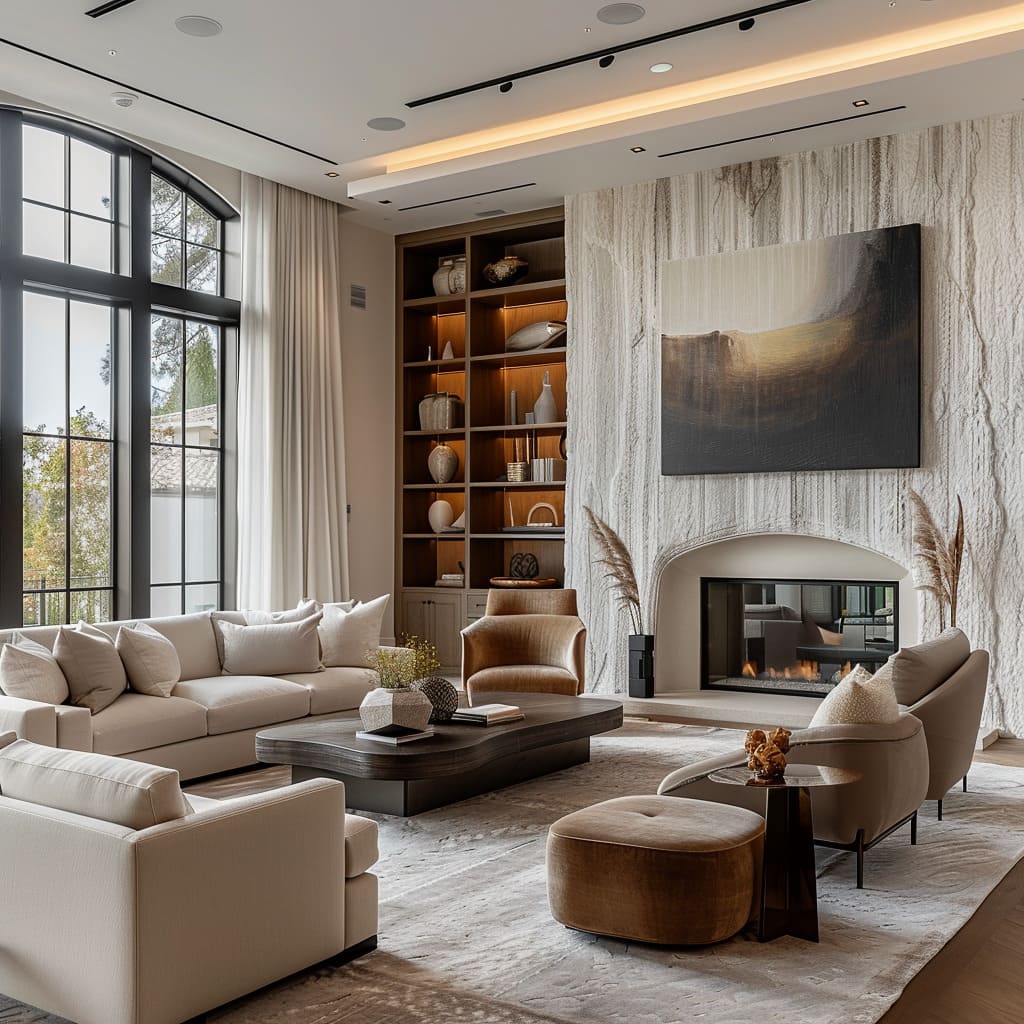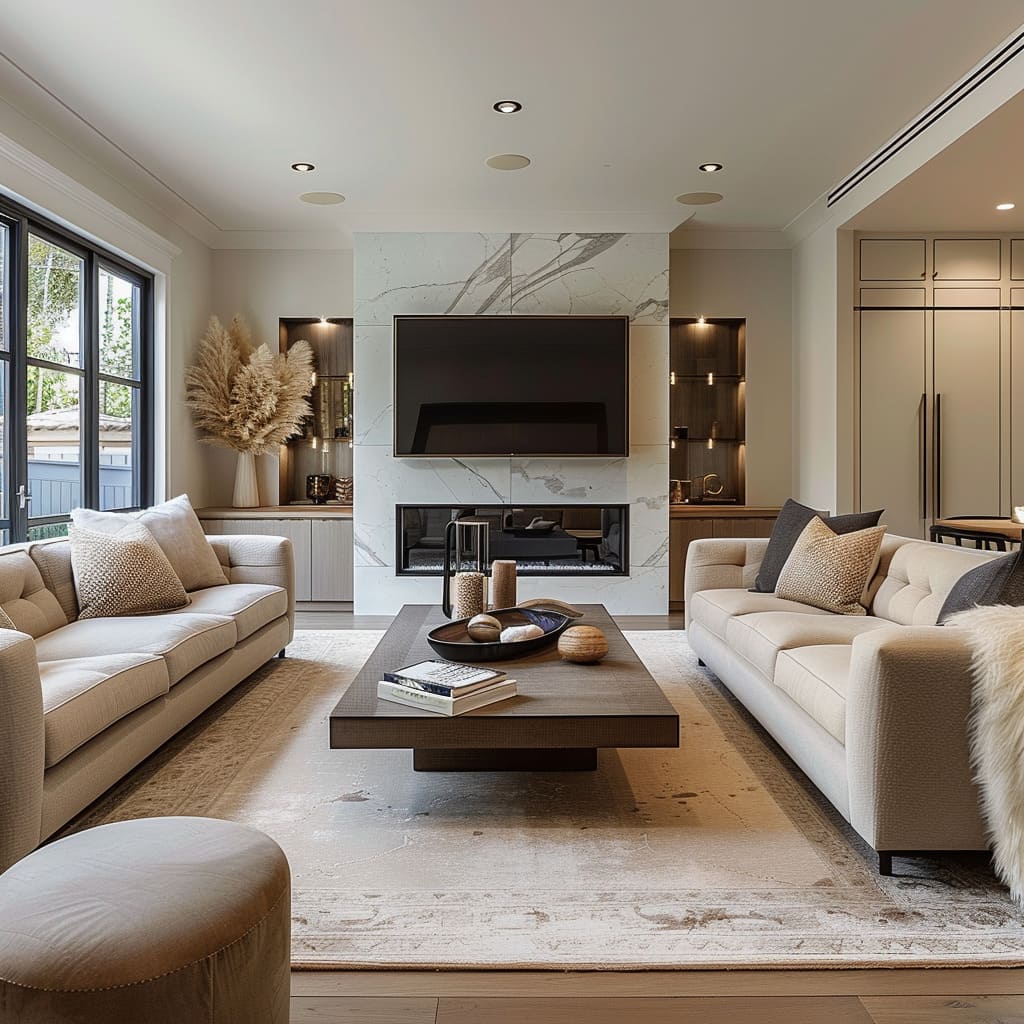Dive into the art of creating spaces that resonate with calmness, purpose, and refined aesthetics. This article explores various design philosophies that intertwine the elegance of functionality with the beauty of visual and spatial harmony.
Discover how the meticulous detailing in design can evoke a sense of calm and focus, where every element is thoughtfully placed to create serene and organized environments. Experience the fusion of form and function, where practicality meets sophistication, and delve into the interplay of light and reflection that adds depth and character to spaces.
Through these design principles, uncover the blueprint of creating environments that are not just visually appealing but are embodiments of tranquility and purposeful design.
Calm and Focused Detailing
In spaces where every element has its place, and the air itself seems ordered and tranquil, this design approach prioritizes the deliberate placement and presence of each object and feature within the room. Emphasizing a less-is-more philosophy, this group underscores the power of a room’s ability to convey a message through its most quietly confident elements, creating a narrative through serenity and understated drama.
Serenity in Organization
There is a serene and ordered quality to the layout and organization of objects within each space. The organization within each space is approached with a Zen-like philosophy, wherein every object is deliberately chosen and positioned to evoke a sense of calm and order. It’s a thoughtful orchestration of items that speaks to the soul’s yearning for tranquility and the mind’s appreciation for order. Bookshelves are curated galleries, not mere storage; furnishings are as much about the space they define as the space they occupy. The resulting environment is one that breathes quietly, where visual noise is subdued, and a meditative quality infuses the air, inviting inhabitants into a state of peaceful contemplation. In this carefully arranged setting, one finds a sanctuary from the chaos of the outside world, a place where serenity reigns and organization is not just practical but deeply aesthetic and profoundly soothing.
Functional Elegance
The intersection of beauty and utility is where functional elegance resides. In these spaces, every piece not only serves a purpose but does so with grace and sophistication.
From the way curtains frame a window to the unassuming integration of the latest technology, these characteristics ensure that practicality never comes at the expense of style.
Sophisticated Window Treatments
The design includes elegant window treatments such as full-length curtains that add vertical dimension and contribute to the room’s overall elegance.
Discrete Storage Solutions
There is a presence of built-in shelving and cabinets that blend seamlessly with the walls, offering storage that doesn’t interrupt the visual flow of the room.
Non-Intrusive Technology
Technology, like flat-screen TVs, is present but incorporated in a way that doesn’t dominate the room’s aesthetic. Within these spaces, technology is assimilated with a deft touch, ensuring that the modern conveniences of flat-screen TVs and digital devices enhance rather than interrupt the design narrative. They are nestled into the environment, often framed by architectural elements or cleverly disguised within furniture pieces, making their presence felt only when called upon. This subtlety in integration respects the visual harmony of the space, allowing the room’s design to speak first while the technology whispers its functionality. In doing so, it maintains the integrity of the room’s style, ensuring that the sleek and streamlined forms of contemporary gadgets contribute to, rather than detract from, the overall elegance and intentional design of the living space.
Sculptural Furniture Pieces
Some furniture items are chosen for their sculptural quality, acting as standalone pieces of art. These furniture items transcend their utilitarian roles, selected for their ability to command attention and provoke thought, much like a sculpture in a gallery. Their forms are a celebration of craftsmanship and design ingenuity, inviting one to appreciate their silhouette from every angle. They stand in the room not merely to be used but to be observed and admired, contributing to the room’s aesthetic with their presence. With each curve and line deliberately conceived, these pieces serve as the nexus where functional meets the formidable, and where the everyday act of living is elevated to an experience akin to interacting with art.
Visual and Spatial Harmony
Explore the essence of spatial elegance through Visual and Spatial Harmony, where design transcends mere aesthetics to evoke a sense of balance and serenity. This approach emphasizes the nuanced integration of geometric forms, monochromatic artistry, and deliberate spatial planning to create environments that are both cohesive and captivating.
Experience how subtle geometry, thoughtful negative space, and unified architectural expressions work in concert to craft spaces that are harmoniously balanced yet dynamically engaging. Witness the sophistication of invisible transitions and intentional asymmetry, where each element is meticulously placed to foster an ambiance of refined tranquility.
Use of Subtle Geometry
The furniture and decor items often feature geometric shapes, but they are subtle and understated, lending a sense of order and precision to the space.
Monochromatic Artistry
Art pieces displayed tend to favor a monochromatic scheme, allowing the texture and brushwork to take center stage rather than vibrant colors.
Deliberate Negative Space
The layout of furniture and decor is such that there is a thoughtful use of negative space, which prevents the environment from feeling cluttered.
Unified Architectural Language
There’s a continuity in the architectural elements, like consistent use of materials and repeating shapes that tie different spaces together.
Invisible Transitions
Transitions between different types of flooring or spaces are almost imperceptible, creating a fluid movement throughout the home. The artful blending of materials and spaces eliminates jarring interruptions, allowing a seamless dance from room to room. This subtlety of transition is a deliberate design choice that upholds the visual continuity of the home, fostering an unspoken narrative of cohesion and fluidity. Floorings merge with an expert gradation of textures and tones, leading one through the home’s narrative without a single falter in the storyline. The mastery of these transitions is akin to a well-edited film, where the cuts are so smooth they go unnoticed, yet their effect on the overall experience is profound, ensuring that the aesthetic dialogue of the home remains uninterrupted.
Light and Reflection
Delve into the luminous realm of Light and Reflection, where illumination and reflective surfaces converge to create a symphony of light that enhances the spatial experience. This segment focuses on the artful interplay of ambient lighting and reflective elements to sculpt spaces that are imbued with warmth and depth.
Discover how a soft glow can transform an environment, the strategic use of mirrors to expand and enrich spaces, and the elegance of restrained ceiling designs that elevate without overwhelming. Through this exploration, uncover the subtleties of light and its ability to shape, define, and refine the essence of a space, offering a new perspective on the interplay of luminosity and design.
Ambient Glow
Rather than bright, direct lights, the spaces often use lighting that creates a soft glow, enhancing the ambiance without being overbearing.
Selective Use of Mirrors
Mirrors are used strategically to amplify light and create the illusion of more space, but they are not overused, maintaining a certain level of intimacy.
Restrained Ceiling Design
Ceilings tend to have simple designs, with recessed lighting and subtle architectural elements that complement rather than overpower the room. Ceilings are crafted with a minimalist ethos, providing a quiet canopy that eschews complexity in favor of clean lines and elegant simplicity. The use of recessed lighting and modest architectural details ensures that the ceiling supports the aesthetic of the space without demanding the spotlight. This approach creates a sense of openness and calm overhead, allowing the room’s design to take center stage while the ceiling gracefully recedes into the backdrop, its understated design enhancing the overall sense of spaciousness and peace.
In the realm of interior design, the journey through calm and focused detailing, functional elegance, visual and spatial harmony, and the nuanced play of light and reflection culminates in spaces that transcend ordinary living. These design principles collectively forge environments that are not just habitable but are poetic in their existence.
They remind us that every design choice, from the subtle geometry of furniture to the strategic use of light, contributes to the overarching narrative of space that is harmonious, functional, and aesthetically profound. As we conclude, it becomes evident that the essence of good design lies in its ability to merge utility with beauty, creating spaces that are reflective of calm, focus, and an unwavering attention to detail, guiding us back to the fundamental principle that in simplicity, there lies true elegance.


